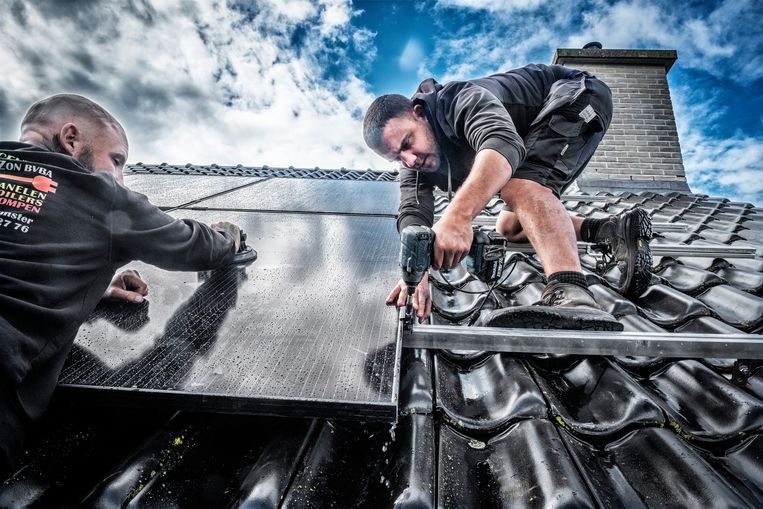87 countries have already made the switch to renewable energy, according to an analysis by Bloomberg News. For the first time, the world is investing more in wind and solar energy than in oil and gas exploration.
When an ice shelf slowly melts and then suddenly disappears very quickly or when ocean currents suddenly change, these can be tipping points with destabilizing domino effects. More than ever, climate scientists are concerned about these tipping points.
But there are also positive green turning points. When solar panels, wind turbines, or electric cars first gain a foothold for years, this can increase very quickly and dramatically from a point. This is happening now.
For the first time, there are more investments in solar and wind energy than in oil and gas exploration. This year, according to energy research group Rystad Energy, it will be $494 billion and $446 billion, respectively. The IEA also expects to achieve a record amount of new renewable energy facilities by 2022, and electric vehicle sales will make up 13 percent of global light vehicle sales this year.
In addition, 87 countries now get at least 5 percent of their electricity from the sun and wind. This shows an analysis by financial news agency Bloomberg Green. The US grew from 5% in 2011 to 20% last year. Our country shows a similar curve and is now 6 percent from the sun and 12 percent from the wind. Experts say it will increase exponentially.
Magic Border
Pioneers such as Denmark and Ireland have shown that once the ‘magic limit’ of 5 per cent is reached, green energy penetrates at an accelerated pace. Other technologies also follow the S curve: first it becomes slow and then suddenly very fast and is widely embraced, followed by a plateau and joined by some latecomers.
“It was the same with smartphones,” says innovation researcher Thomas Wiens (VUB). “With renewable energy, you always see that once you make the first more costly investments to produce, costs come down and there is much more growth after a small number of early investors.”
A Bloomberg analysis shows that the share of residential solar panels in Australia has grown from 1 to nearly 15 per cent of energy capacity in eight years. China is working on the world’s fastest transition to wind and solar energy.
Large batteries for energy storage and grid stability, heat pumps and electric cars are also on the rise after a relatively long time at the sidelines. In our country, the percentage of electric two-wheelers in the total number of new two-wheeled bicycles will rise from 2 percent to 55 percent within five years. Sales at Volkswagen, the largest combustion engine, now consist of nearly 30 percent of new electric vehicles.
In Europe, five fossil heating boilers have been replaced by a heat pump. Because of the energy crunch, this curve is now rising faster. “In our country, the Netherlands and Germany, among other countries, installers can no longer keep up with the pace,” says energy expert Joannes Lavigne (UGent).
He and Wen were not surprised by the incredible journey this technology is making. “This is because of the learning effects,” says Lavigne. “The more solar panels or wind turbines you make, the cheaper and more efficient they can be.”
For example, according to Bloomberg, installation costs drop by 30 percent every time the number of solar panels doubles. Solar cells are now twice as large as twelve years ago, and there are wind turbines reaching 14 megawatts, compared to 2 megawatts before. Five years ago, no one would have thought a 100MW battery was possible. Tesla, among other things, is now building 600 megawatts.
“These prices are also coming down while the batteries are increasing in performance,” Wiens. During heat waves in California, those big batteries avoided blackouts and in Australia they acted as backup during wildfires and a large new park will prevent gas and coal plants from operating during peak hours. There are also such battery projects in our country that can serve this purpose and help ensure stability on the power grid.
Challenges
Although there are challenges. For example, the grid must be adapted to be able to handle all that renewable energy. “We aim to strengthen the network as well as the smart devices that will provide the network during peak hours,” says Lavigne.
Permit issues and neighborhood protests can also be an obstacle, and sometimes the materials are hard to find. The wind energy sector is going through hard times because the materials are too expensive due to the crisis. The lithium used in batteries in South America is mined in polluting and socially questionable ways, and nearly all solar panels come from China, with which we are rethinking our relationships. But I think technological progress will also provide us with alternative raw materials so that we become less dependent on those countries and green growth can continue,” Lavigne said.
Even the energy crisis now has hardly disrupted that additional reversal, according to the DNV Energy Research Agency. “The fact that solar and wind prices are dropping so rapidly is the most powerful driver behind the global energy transition,” says CEO Remi Eriksen. “This will outweigh the current short-term shocks.”

“Total coffee specialist. Hardcore reader. Incurable music scholar. Web guru. Freelance troublemaker. Problem solver. Travel trailblazer.”







More Stories
Bitcoin price rises after new jobs data from US
European stock markets open higher | beursduivel.be
Russia’s oil imports to China decline